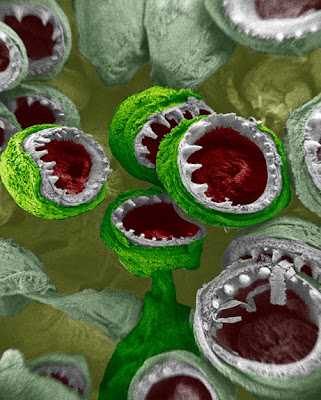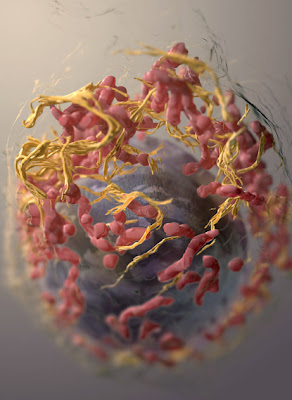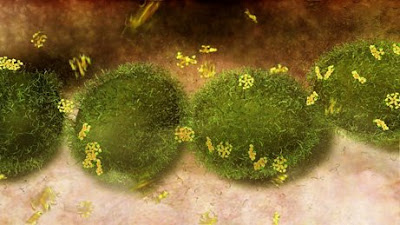
Little Shop of Horrors fans may see a resemblance to the bloodthirsty plant from the 1986 movie in the above electron micrograph image.
Drexel University doctoral student Jessica Schiffman won an honorable mention in photography in the 2008 International Science and Engineering Visualization Challenge for capturing what's actually an array of suckers found on the tentacles of a long-finned squid.
Each sucker--about 400 micrometers wide, or a little smaller than the width of a human hair--is surrounded with "fangs" of chitin, a hard organic material.
Squid use their powerful suckers to secure unwitting prey and feed their robust appetites--much like the horror-movie plant that inspired the image's color scheme.

A computer image provides an intimate look at one of humanity's great enemies--the melanoma cell.
The cancer cell's pink mitochondria and gold endoplasmic reticulum--a network of vesicles and sacs--swirl around a dark nucleus. The rendering was awarded an honorable mention in the illustration category of the 2008 International Science and Engineering Visualization Challenge.
Donald Bliss and Sriram Subramaniam of the National Institutes of Health's National Library of Medicine created the image by "sandblasting" the cell with ions of the element gallium.

Even bacteria that cause strep throat can be beautiful, as seen in the above animation of the body's immune system response.
The picture, which won an honorable mention in the noninteractive media category of the 2008 International Science and Engineering Visualization Challenge, depicts how immune system cells can ride to the rescue and destroy the harmful bacteria.
"We hope that the animation will pique people's interest in how the immune system works ... ," said Etsuko Uno of the Walter and Eliza Hall Institute of Medical Research, who won the prize with colleague Drew Berry.
National Geographic's Best Science Images of 2008
No comments:
Post a Comment